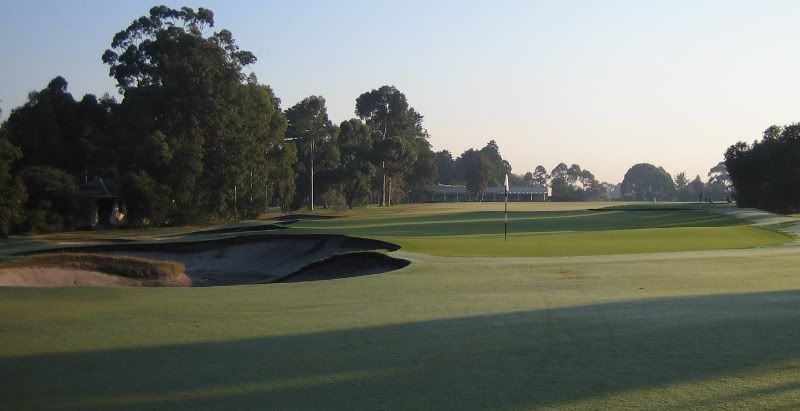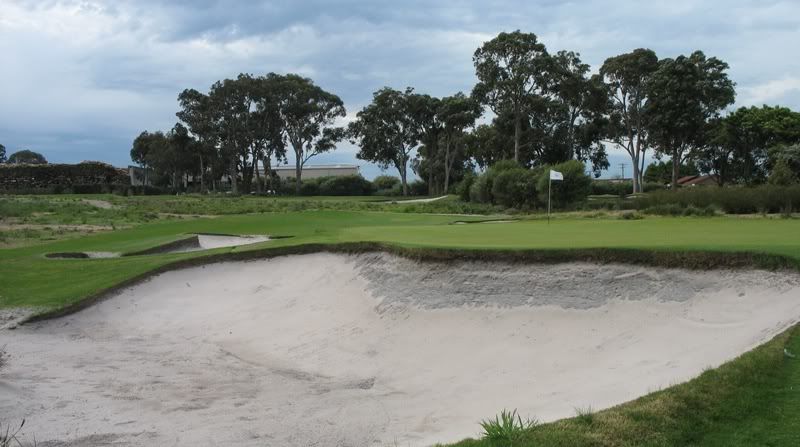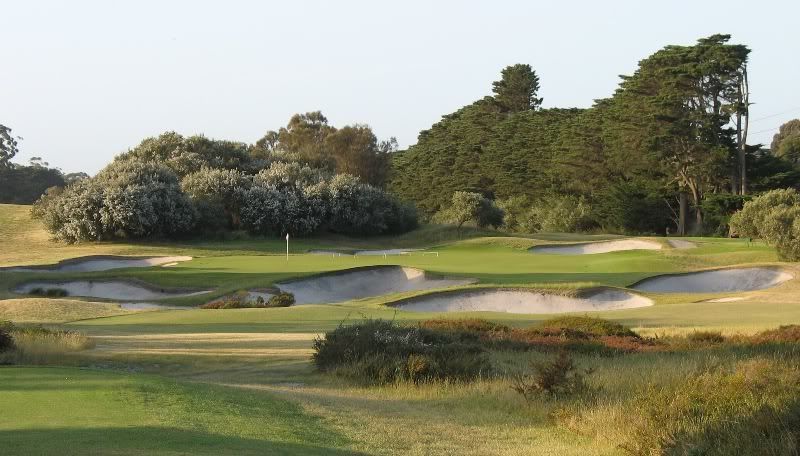Pat,
Sometimes I think you would rather have an argument than learn something. The greens at Metropolitan are indeed mowed to the edge of the bunker and are a feature of the course that most visitors comment on. They are not geometric and more often than abutting the greens they eat into the greens, making them more strategic than geometric bunkers that abutt greens.
Here is a photo of the ninth green. Not the best example but you can see the mowing lines as an example.

By the way, I assume your safety comment was a joke but in case it was not, can you name a course where the grass around bunkers is never mowed? No matter what length it is it has to be mowed to the edge of the bunker at some stage.
The more common maintenance practice around Melbourne is for 1 foot of fringe grass (shorter than fairway grass) around the green I would be interested to see if you think any of the bunkers pictured below lack function or form.
The 12th at Royal Melbourne - note the strategic advantages of a non-geometric bunker eating into the green.

The 10th at Spring Valley - a second tier Melbourne sandbelt course.


The 5th at Royal Melbourne West

The 16th at Royal Melbourne East

And finally, this is from Rosanna, a course on clay not ranked in Australia's top 100.

In summary Patrick, I think these photos show that:
-You can have form and function.
-non-geometric bunkers that eat into greens can actually be more strategic than geometric bunkers that flank greens.
-the low course maintenance budgets in Australia (and the far higher cost of labour) do not prohibit this design feature.
-and finally, you need to come down and check out these courses one day, it seems like you would like them.
cheers,